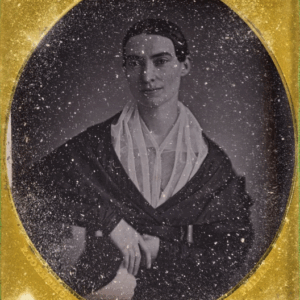JTF (just the facts): Published by Kehrer Verlag in 2015 (here). Hardcover, 108 pages, with 66 black and white photographs. Includes essays by Douglas Nickel and the artist. (Spread shots below.)
Comments/Context: Inshallah is the first photobook by the Ukrainian photographer Dima Gavrysh who has been living in the United States for the past decade. Growing up in the former Soviet Union, Gavrysh was constantly exposed to the country’s heroic and idealized presentation of war, surrounded by the memories of World War II (strongly present in numerous heroic movies, grandiose monuments, annual victory celebrations, etc) and by the shadows of the more recent Cold War. Growing up without his father, Gavrysh developed a fascination for the army, its order and its masculine strength. The Soviet involvement in Afghanistan became a vivid and mysterious part of his childhood; it too was another highly romanticized war. In 2004, he moved to the United States, another country with a complex cultural relationship with war and its own ongoing conflict in Afghanistan. Inshallah is Gavrysh’s very personal take on the war, mixing scenes from the front lies with childhood memories, intercultural experiences, ghosts and dreams.
In 2009, Gavrysh travelled to Afghanistan as a news photographer, embedded with the US Army as a photojournalist for the Associated Press. He found himself taking a lot of images with an iPhone, shooting mostly in black and white and often using the popular Hipstamatic application. It helped him to distance from his regular photographic routine and find his own unique voice as he transitioned from direct reportage to a very personal interpretation of the war experience.
The photographs included in the book are not typical war images – there are no urgent battle shots or haloed manifestations of heroism. Instead, his pictures opt for the timeless in-between moments of the campaign, where Gavrysh could more easily explore the patterns and personal associations he saw in what was going on. The first few images are a progression gradually appearing from the darkness, slowly transitioning from a blurry night opening to a grey foggy unknown, and then on to an anonymous hill (or a pile of rocks). This mysterious and unexplained introduction to the nameless geographical location is followed by a figure of a lone soldier. He is shot from the back against a misty undefined background – his head is down as he holds a weapon in one hand and a backpack in the other. The mood is shadowy and haunted, and in direct contrast with the assurance of his Soviet propaganda background, full of uncertainty.
Many of the images capture fleeting moments of downtime as soldiers play with a bird, look at a sky full of bright stars, smoke cigarettes, or pose with a wet spot in the shape of a heart on a uniform. While helicopters, bullet cracked windshields, sandbags, and even a rocket launcher or two wander through the dark photographs, there are no combat scenes, mass destruction, or any other obvious traces of violence. Instead, Gavrysh focuses on fragments of life that we wouldn’t normally associate with an active conflict zone. He shows us a wheat field paired with what looks like a close up of forehead skin with running drops of sweat. Another image captures the ground covered with bullets mixed with sand. These impressions don’t coalesce into a linear storyline, but rather come together in a sequenced visual flow full of echoes and connections, using deep shadows, grain, and angles to pull the viewer along from frame to frame.
The book itself is a square, following the format of the Hipstamatic images. It looks scarred and heavy, yet it is surprisingly light. The pages are hosted between two cardboard endpieces, with a rough exposed spine featuring the book title and photographer’s name. Printed on thick paper, the layout is rather simple, all images are full bleed with one or two per spread. Two quotes from Franz Kafka’s The Castle (his last and most emotional novel) in large type are blown up full spread, adding another intimate and allusive element to the visual narrative.
Inshallah is in many ways a reflection of Gavrysh’s own inner world and its specific personal conflicts. His highly gloomy black and white photographs are far from a straightforward documentation of the war, and the patterns, shades and leaks of lights he returns to build into something sensitive, reflective, and inwardly focused. Gavrysh describes his photographic journey with the following words: “Mesmerized by the complexity of the Afghan chaos, I strive to better comprehend my personal relationship to these wars: two empires, two mentalities, same battlefield, twelve years apart”. Immersed in war, Gavrysh ultimately works his way free, connecting past and present, and coming to terms with their interwoven and often dispiriting lessons.
Collector’s POV: Dima Gavrysh does not appear to have gallery representation at this time. Collectors interested in following up should likely connect directly with the artist via his website (linked in the sidebar).























